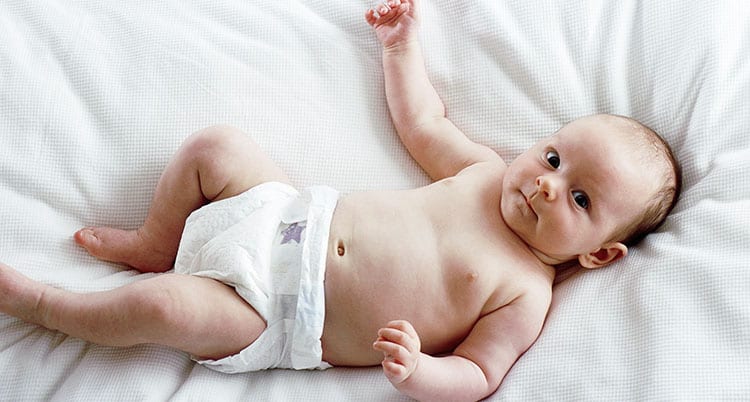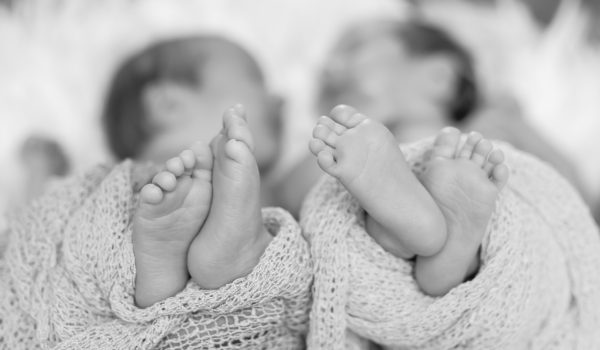Cleansing baby’s delicate bottom area at nappy change time is essential to remove impurities and waste that are left on the skin. Any waste left on skin is a contributing factor to nappy rash. Nappy rash is mostly caused by the specific environmental conditions inside the nappy. Without proper care, wetness, bacteria, friction, urine and faeces can cause a breakdown in the skin barrier, leading to irritants entering the skin. The result is a painful rash. Nappy rash can also be caused by infrequent nappy changes, chafing nappies that rub or fit too tightly.
Nappy rash can be a dangerous cycle unless properly cared for. Moisture in the nappy can be a disruption to baby’s delicate skin barrier and can cause irritation leading to an increased level of enzyme activity or maceration. This causes an increase in the pH levels resulting in skin barrier disruption as fungi can more easily colonize the defective skin and can cause infection and further levels of irritation.
Nappy rash is very distressing for a baby and research has proven some of the impacts include an increase in frequency of crying, changes in eating habits, agitated and restless behaviour, and decrease in urination/defecation to avoid the pain. The breakdown in the skin barrier can lead to inflammation, allergen sensitisation and bacterial infections entering the body if left untreated.
Many parents have come to believe that water and cotton wool are enough to remove waste materials from sensitive nappy areas. Unfortunately this is not always the case. Research concludes that JOHNSON’S® baby wipes are more effective than water and cotton wool alone at removing waste materials from skin.
“Preventing nappy rash is always preferable to trying to treat it after it has set in. Nappy rash can be distressing for baby with up to 50% of infants experiencing at least one episode of nappy rash at some time,” said JOHNSON’S® baby Consulting Midwife Jo Bridgman. “The impact of nappy rash on baby is both emotional and physiological but the right nappy change routine can help.”
For a complete nappy change regimen, JOHNSON’S® baby Consulting Midwife Jo Bridgman recommends:
- Change your baby’s nappy as soon as possible after it becomes wet or soiled.
- Cleanse your baby’s genital area thoroughly after each bowel movement, and allow it to dry after cleansing with a specially designed baby wipe. Allowing for adequate drying helps to prevent nappy rash and this can be done by patting dry or allowing some air-drying time.
- Before putting the nappy back on coat your baby’s bottom with a thin layer of nappy rash ointment. Look for one with a higher level of zinc oxide.
- Don’t fasten nappies so tightly that there’s no room for air to circulate. Nappies, wraps and clothing should be loose enough to let your baby’s bottom breathe.
Baby skin naturally loses more moisture through transepidermal water loss (TEWL) than adult skin. The use of emollient-based products, such as lotion wipes and nappy cream helps protect the nappy area from further aggressions and minimizes TEWL.
Cleansing is a crucial step in a healthy nappy change regimen and JOHNSON’S® baby wipes are, mild and effective, enriched with emollients and lotion to help protect baby’s delicate nappy area whilst removing potentially harmful waste and bacteria.
Research has proven that JOHNSON’S® baby wipes removed more impurities versus water and cotton wool alone. In a trial on over 280 babies research also indicated that JOHNSON’S® baby wipes were as mild on baby skin. JOHNSON’S® baby wipes are enriched with moisturising lotion to leave a protective layer on baby’s skin and minimise TEWL and are clinically proven mild and gentle, an effective first step in the nappy change routine. Cleansing the nappy area is just the first step in a health routine.
The right nappy care routine can help prevent nappy rash before it starts.
What does your nappy change regimen include? Tell us in the comments below!











Always read the contents in fine print on baby wipe packages – almost all of them contain chemicals. WaterWipes are the only chemical free baby wipes – 99.9% Water and 0.1% Grapeseed extract. They cleanse perfectly. Available at Coles.